Philips recently released the DiamondClean Smart, a new iteration of its top-of-the-line toothbrush with all the bells and whistles.
Not only does it connect to your iPhone using a Bluetooth connection to help you brush better than ever before, but it's also been redesigned to decouple brushing mode from intensity. There are new smart brushes for more tailored brushing, additional modes to meet different needs, and other small refinements that bring overall improvements.

I've been using Sonicare toothbrushes for more than 10 years, and for the last five, I've had a DiamondClean. This new DiamondClean toothbrush is going to make your teeth whiter, healthier, and squeaky clean, but with prices that start at $230, it's not cheap, and the app is sometimes more gimmicky than helpful. All in all, though, you're not going to find a better brushing experience.
Design
The DiamondClean Smart adopts design elements from the original DiamondClean, but it also introduces both new and refined features. The brush is sleek with clean lines and the traditional look of the DiamondClean, but instead of a single button to turn it off and on, there are now two buttons.
The top button continues to function as an on/off button, but there's now a second button that controls the intensity. Below the two buttons, there are a series of LEDs denoting the different brushing modes, and at the bottom, there's a light-up base that fits into the charger.
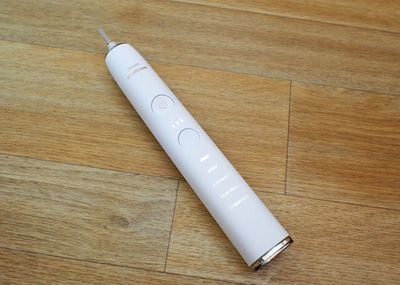
Philips sells the new DiamondClean Smart in a range of colors, but the one I tested is white with silver accents and gold lettering at the top. The mix of gold and silver is a somewhat odd choice, but it looks elegant on the bathroom counter.
A small metal prong at the top of the toothbrush base holds the brush in place, and the brush head can be popped off the top so you can switch brush heads. If you're familiar with Sonicare toothbrushes, you know the brush heads need to be changed out on a regular basis - approximately every three months.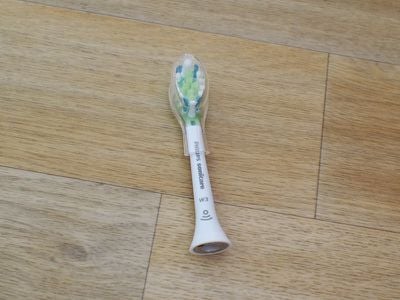
Brush heads for the DiamondClean Smart come in a range of different styles to meet different needs and are priced at about $10 each, but you can often find them cheaper in bulk on sites like Amazon. The brush heads aren't cheap, but each one lasts for several months. And with this Smart model, the app will let you know when it's time to replace a brush.
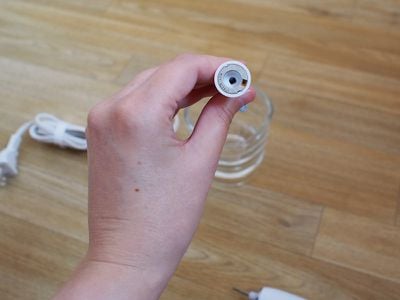
All in all, the DiamondClean Smart's body is a lot like the DiamondClean and I have no complaints. Philips has used this design for years, and it works well. It's ergonomic, easy to hold, and it looks great on the countertop. Unlike some of the other Sonicare brushes, there are no grooves -- it's all one solid piece -- which means there's no mold and little toothpaste buildup. It stays clean, as a toothbrush should.
Features
There are five brushing modes, each with a different duration and intensity to achieve specific brushing goals. The modes are as follows: clean, white+, gum health, deep clean+, and tongue care.
Switching between modes can be done without turning the brush on by pressing the second button. After selecting a mode, the brush is turned on by pressing the power button, and the intensity can be changed by pressing again on the power button.
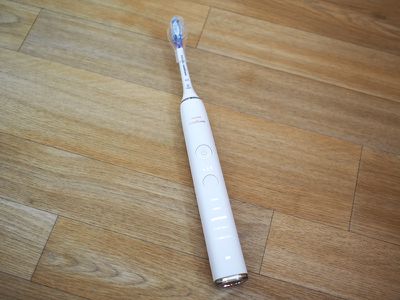
Each mode offers a different brushing time and intensity. Clean, for example, lasts for two minutes, while gum health adds additional time to allow you to focus specifically on your gums. I tend to use the gum health mode and the clean modes more than anything else as part of my general cleaning routine, but the other modes come in handy when I want a longer brushing experience or more focus on my front teeth.
It's nice to have different modes that can meet a wide range of brushing needs, and if your dentist is like mine, they can suggest the best brushing modes based on the state of your teeth and where you might need improvement.
The DiamondClean Smart also has a new set of features dedicated to tongue care. There's a tongue care mode that specifically works with the tongue care brush to make sure you're also brushing your tongue for the freshest breath. This tongue care setup is new to the Smart and wasn't available in the previous DiamondClean models.
Brushing Experience
The toothbrush itself offers quiet operation. It's not silent by any means, but it's lower pitched than the original DiamondClean and nearly inaudible outside of the bathroom when you're brushing your teeth.
With the DiamondClean Smart, regardless of which brush mode you choose, brushing is divided into sections so you can make sure you're getting all of your teeth clean. Brushing is broken up as follows: bottom right, bottom middle, bottom left, top right, top middle, and top left. The brush will buzz when it's time to move on to a new section so no teeth go without a full brushing.

To keep you from applying too much pressure, the base of the brush will flash when you're brushing too hard. Brushing too hard can damage your gums, so this is a nice feature if you're someone who doesn't pay attention to how much pressure you're putting on your teeth when brushing.
As for the overall brushing experience, the DiamondClean Smart is unparalleled. Two minutes with this toothbrush and my teeth are as clean and as shiny as if I've just been at the dentist. If you haven't used a Sonicare before, there is a world of difference between how clean your teeth feel compared to brushing with a manual brush.
Accessories
Brush Heads
Philips ships the DiamondClean Smart with a selection of smart brushes. Smart brushes have a small chip that communicates with the DiamondClean Smart to let it know what kind of brush is attached. Through this connection, the DiamondClean automatically selects the optimal brushing mode and intensity to go along with the brush head, but you can change it if you want.
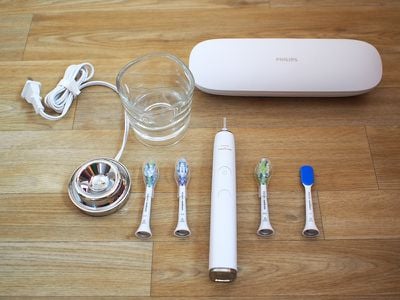
The DiamondClean Smart will also work with "dumb" brush heads that do not have the smart chip capabilities -- you'll just need to select mode and intensity on your own.
Each smart brush has unique properties to address a specific issue in the mouth. There are brushes for plaque control, gum care, and whitening, all with different designs and brush hardness. The gum care brush, meant for your gums, is the softest of the bunch, while the plaque control and whitening brushes have firmer bristles.
Charging Cup
The DiamondClean Smart, like the DiamondClean, uses inductive charging. It charges in a glass cup that's connected to a charging base, so when it needs to be charged, you just stick it in the cup. Philips suggests this cup can also be used for rinsing, but I've never really used it for that purpose. It does get toothpaste goop in it, so plan to wash it out on a regular basis.
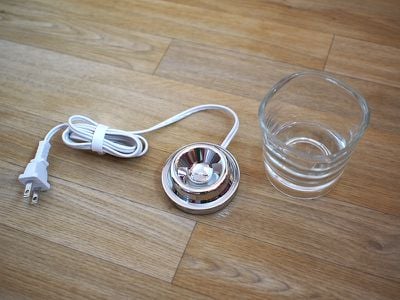
Design wise, the cup is a high-quality thick glass vessel that's similar to any drinking cup, and its design has been tweaked to be slightly more round than the cup that shipped with previous DiamondClean models.
When charging, the DiamondClean Smart toothbrush has a few new features - it makes an audible sound when it's placed on the charger so you know it's in the proper position and the base glows more brightly when it's first stuck in the cup. These are welcome changes because it is difficult to tell when the standard DiamondClean brush is charging. There's no confusion with the DiamondClean Smart.
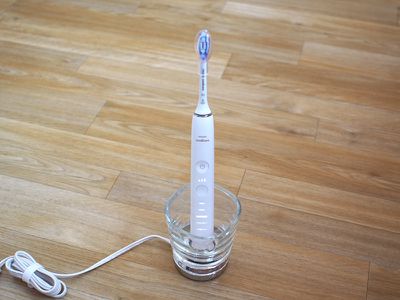
The charging cup method is simple and convenient because you just have to drop your brush in the cup when you're done with a brushing session, but it can be a hassle if you prefer to keep your toothbrush tucked away in a medicine cabinet or a drawer because it's a little bit bulky.
Travel Charger
The travel charger is meant to store and charge your toothbrush when on a trip. It's made from a quality soft-coated plastic, and inside, there are cutouts for the toothbrush and two additional brush heads. At the bottom of the travel charger, there's a built-in cable that can be plugged into any USB-A port for charging purposes. When not in use, the cable tucks in underneath a piece of plastic that hides it from view.
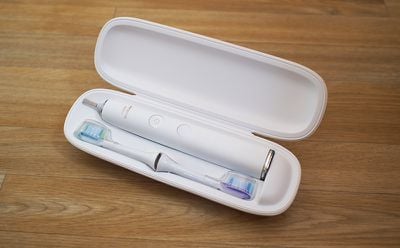
This travel charger is an upgraded version of the travel charger that comes with the standard DiamondClean. That version does not include a built in cable.
App
You can use the DiamondClean Smart entirely without the app, but this is a "smart" brush, so it is designed to be used with the Philips Sonicare app. The toothbrush connects to your iPhone using Bluetooth, and with the app, you can see your progress brushing your teeth in real time.
Simply open up the app, remove the DiamondClean from the charger, and press the power button to start a brushing session. The app displays a model of a set of teeth on the display, and as you brush, it keeps track of how much time you spend in each area, lets you know if you're moving the brush too much, and makes sure you aren't applying pressure.
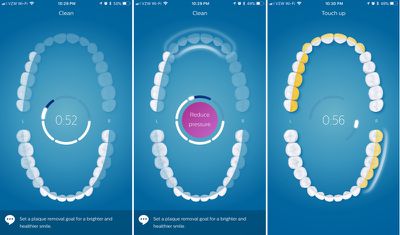
Essentially, it walks you through brushing your teeth step by step, making sure each tooth is adequately cleaned. To track where the brush is in your mouth, there's a built-in accelerometer in the base of the DiamondClean Smart. The tracking works well for the most part, but it can only track a single quadrant at a time, and depending on how you hold the brush, it might not register. I seem to hold the brush in a way the DiamondClean doesn't like when brushing my top teeth, so it sometimes doesn't pick up the correct amount of time I've spent brushing in a specific area.
When each brushing session is done, the app lets you know which areas you missed and adds extra time to the timer so you can go back and get those areas. It also asks if you've brushed, rinsed, and brushed your tongue, and records that data.
In addition to monitoring each brushing, the app also stores data over time on your brushing habits so you can see how you've improved. If there's an area that hasn't received enough cleaning time or has been subjected to too much pressure or scrubbing, it'll show up in your progress chart so you can rectify the problem.
![]()
The app's tracking features are useful, but I'd like to see more expansive charts and graphs that let me see data like how many times a day I brushed, how long I brushed, areas I missed, and more. At the current time, figuring out this data just from a picture of a set of teeth is a little difficult.
Along with tracking your brushing habits, you can also set specific goals in the app and get reminders to brush. Goals include fresh breath, gum care, whitening, plaque removal, and more. There are also options in the app to designate problem areas like plaque buildup, bleeding, gum recession, and cavities, and the app will then guide you through giving those areas extra attention. Finally, the app can be used to share your brushing progress with your dentist and order additional brush heads.
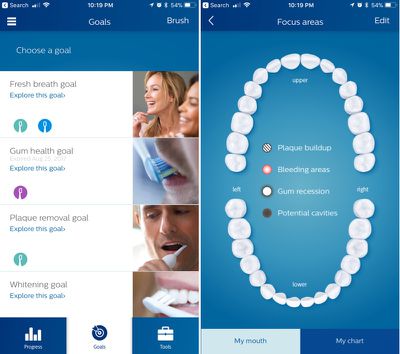
As far as the app goes, I don't necessarily think it's something people are going to want to use day in and day out. It's useful for getting into a brushing routine and learning how to brush, but it can be a hassle to open up an app and monitor your brushing when you're in a hurry to get out the door.
Unfortunately, if you're not using the app, the brush is not fully tracking your brushing sessions and collecting complete data, so the app is a requirement if you want to monitor your dental health over time. There's also some kind of points system, but this doesn't feel fleshed out at all, and I'm not sure what the points contribute to.
All in all, I'd really like to see some improvements to the app's design, the data tracking, and the way that data is displayed, but it's useful for establishing and maintaining good brushing habits.
Models
There are three distinct DiamondClean Smart models. The unit I tested is the DiamondClean Smart 9500, but there are also 9300 and 9700 models, all of which have different accessories and different prices. All of the models share the same general design and features, however.
The Sonicare 9300 is $230 and comes in four colors: white, black, pink, and a blue gray shade. While the higher end models have five brushing modes, the 9300 has four, doing away with the tongue brushing mode that pairs with a tongue brush. This model ships with three brush heads (plaque control, whitening, and gum care), and it does not include a travel charger with a built-in cord (it requires a separate charging cord like older DiamondClean models).
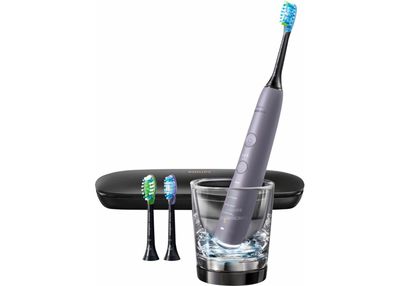
The Sonicare 9500 is $270 and comes in black, white, silver, and pink. It has five brushing modes and ships with four brush heads: plaque control, whitening, gum care, and a tongue brush. It also comes with a higher-end travel charger with a built-in cord.

The Sonicare 9700, priced at $330, is identical to the Sonicare 9500 but it comes in an exclusive "lunar blue" color and instead of four brush heads, it includes seven: three plaque control, two gum care, two whitening, and a tongue brush. It also includes the high-end travel charger with built-in cord.
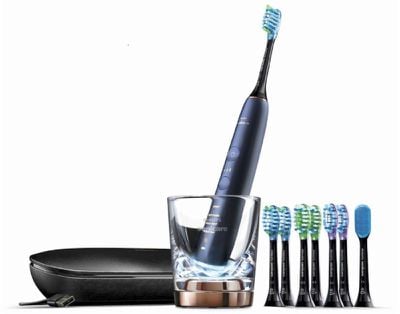
Aside from the number of brushes, the travel charger, and the lack of a tongue brush mode on the Sonicare 9300, all of the DiamondClean Smart models are identical in function, so you can save some cash if you don't need the tongue brush or a more convenient travel charger.
Bottom Line
The DiamondClean Smart 9500 that I tested is priced at $270, with additional brush models available for $230 and $330. That's a lot to ask someone to pay for a toothbrush when you can pick one up at the drugstore for $2, but this kind of upfront investment has the potential to save you money at the dentist in the long run. Even adding in the cost of replacement brushes over time (and you will need to replace them every 3 months), it's more affordable than dental work.
As a longtime Sonicare user, I freely recommend them to anyone and everyone. These brushes offer a much better clean than you can get with a standard brush, they're gentler on the gums, and they're great at encouraging you to brush for an ideal amount of time. With better mouth maintenance, you have a much better chance at keeping your mouth healthy and free from cavities, plaque, gingivitis, and other problems.
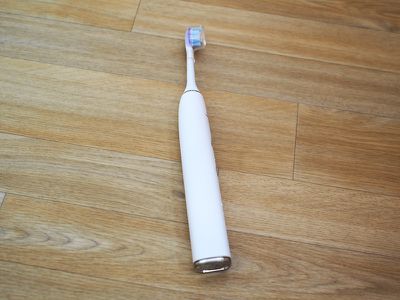
The DiamondClean Smart in particular is an excellent choice if you have troublesome areas in your mouth, need reminders to brush, or simply want to track your brushing habits. With the new design, brush heads, and separate intensity modes, this is one of the most advanced brushing experiences you can get, but at the same time, it's foolproof. Stick the brush in your mouth, move it where the app tells you to, and you're guaranteed a complete clean. It comes with extra brush heads, a travel charger, and all the features you could possibly need.
I think in the long run, most people aren't going to want to hassle with the app two or three times a day, but it's nice to have it there if you need it. I tend to use it at night rather than in the mornings and afternoons, and while I'm not getting a complete tracking experience, I have enough data to know if there are any ongoing problems I need to address. I do wish the app offered up better tracking over time and was able to collect data without being open.
If you don't need an app to motivate you to brush properly, Philips has a much wider range of more affordable Sonicare brushes that are worth checking out, but if you want a top-of-the-line brushing experience, the DiamondClean Smart is the brush to get.
How to Buy
The Philips DiamondClean Smart models can be purchased from the Philips website. The 9300 Series is priced at $229.99, the 9500 Series (the model in the review) is priced at $269.99, and the 9700 Series is priced at $329.99.
All of the models can also be purchased on Amazon, often for lower prices than Philips offers.
Update: Approximately eight months after this review was posted, the button that turns the Sonicare DiamondClean Smart on began malfunctioning. The toothbrush continually turned on by itself, and I was unable to get it to turn off most of the time. A few months after that, the button stopped functioning entirely and the toothbrush broke, refusing to turn on. Philips does have a two-year warranty on its toothbrushes and will replace those that have malfunctioned, but customers should be aware of the potential.
Note: Philips provided MacRumors with the Sonicare DiamondClean Smart free of charge for the purpose of this review. No other compensation was received. MacRumors is an affiliate partner of Amazon and may earn commissions on purchases made through links in this article.


